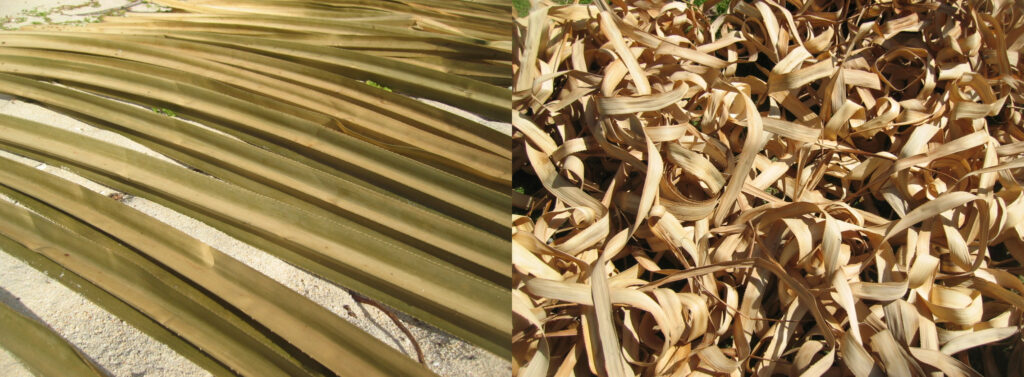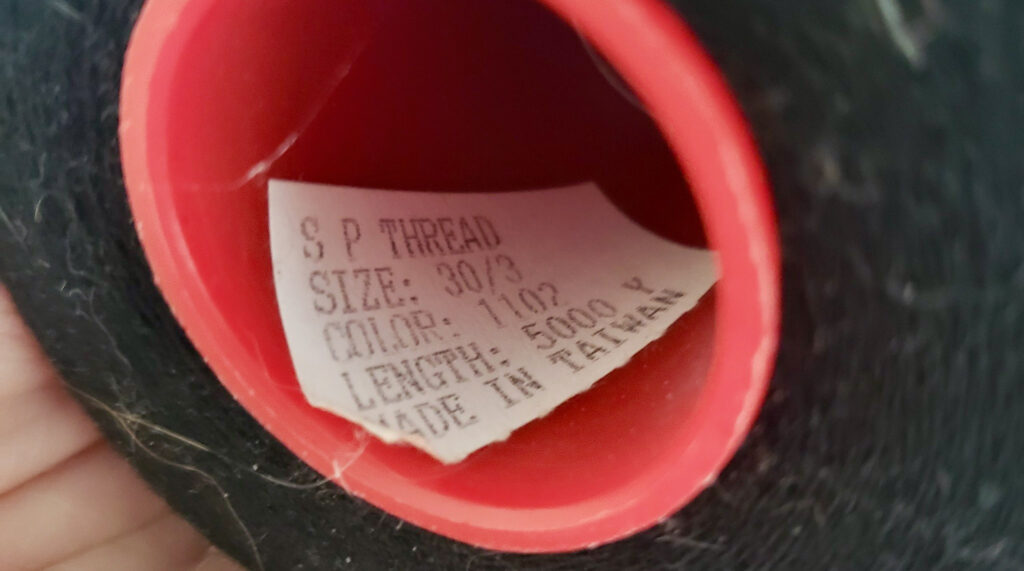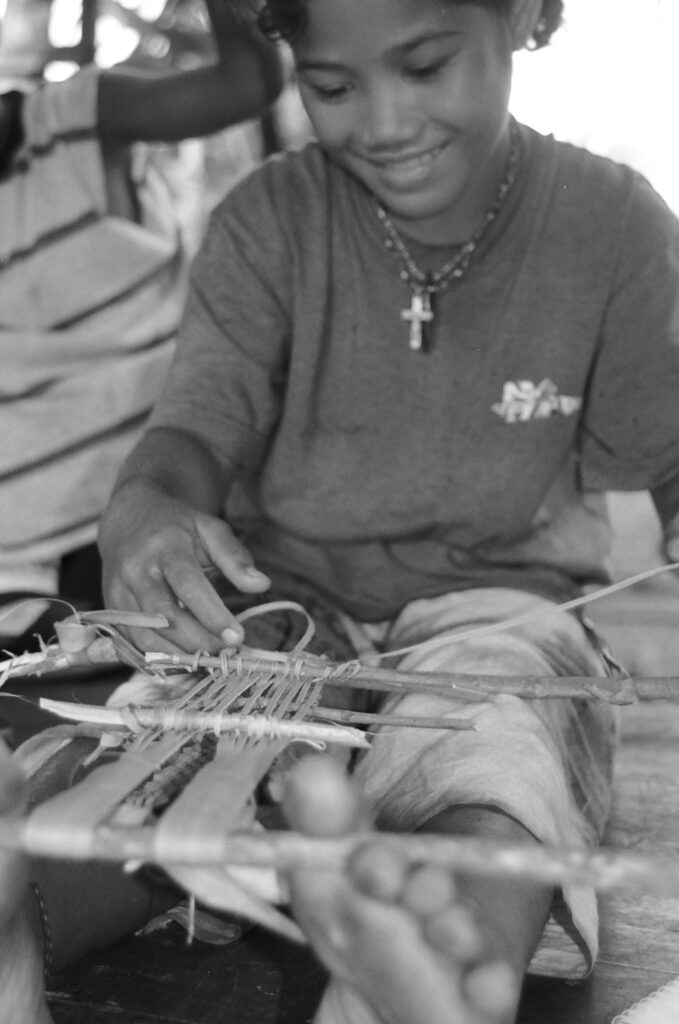
Historically, lavalava were woven from banana and or hibiscus fibers. Agave fiber, grown from an introduced plant, has also been used.

In the late 1950’s commercial thread was introduced by a Jesuit Priest. The introduction of commercial tread eliminated the time-consuming work of preparing and dying natural fibers and tying them for length. Use of commercial threads results in a softer and more durable skirt with more permanent and brighter colors.

Aside from the preparation of the fibers, the process of warping and weaving the lavalava is the same regardless of the material type. For several decades after the introduction of commercial threads, “hybrid” lavalava were woven, comprised of both traditional fibers and commercial threads. Natural fiber lavalava are still woven today, though these tend to be used only for traditional ceremonies, tribute payments, and shroud cloths for the deceased.

The commercial thread first introduced were 40 weight. Today, threads found in stores on Yap Proper include cotton, polyester and cotton polyester blends, in both 30 and 40 weight.
Most often it is “S P” for Spun Thread. This thread is Size 30/3. Those numbers indicate the Composition Standard; specifically that the thread sold on Yap is a 3-ply number 30 thread. The Tex, or weight in grams of 1000 meters of the thread, is either Tex 26 or Tex 27.
Some weavers who’ve obtained thread off-island have come to prefer heavier threads, often choosing 30/3 Tex 60 spun polyester.

The following are websites and retail stores in the mainland United States which sell thread most similar to the thread available on Yap Proper:
CTS USA
1827 South Broadway, Los Angeles, CA 90015
https://www.calthread.com
Search for Tex-60 Jean Thread
3A Thread and Supply Company
1006 San Pedro St, Los Angeles, CA 90015
https://us3a.com/
Search for Size #30 (T-60)
Superior Threads
87 East 2580 South, St. George, UT 84790
https://www.superiorthreads.com/
